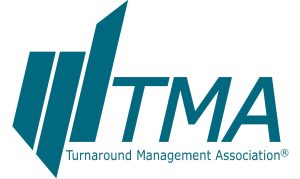The Inside Story of a Chief Restructuring Officer
Senior Managing Director, Melissa Kibler, Joins TMA Panel
 Senior Managing Director Melissa Kibler participated in an expert restructuring panel of Certified Turnaround Professionals at the Turnaround Management Association (TMA) program “The Inside Story of a Chief Restructuring Officer (CRO)” on June 29, 2021.
Senior Managing Director Melissa Kibler participated in an expert restructuring panel of Certified Turnaround Professionals at the Turnaround Management Association (TMA) program “The Inside Story of a Chief Restructuring Officer (CRO)” on June 29, 2021.
The virtual event, held by the TMA’s Chicago/Midwest Chapter, focused on the role of a CRO in helping distressed companies, the range of responsibilities of a CRO, the complexity of issues facing a CRO when stepping into challenging business environments, and the development of turnaround and restructuring plans to address core issues.
“I think one of the biggest value-adds we (as CROs) bring to a restructuring situation is situational expertise in restructuring,” Kibler said in the panel discussion.
“When the phone rings, one of the first questions we get asked is, ‘Do you have somebody who has experience in X industry?’ And sometimes that’s important, but most of the time what we are really there to do is bring our familiarity with the restructuring process, something that very few CEOs or CFOs have or wish to have.”
Kibler added that it is critical in restructurings for companies to maintain control of operations concurrently with implementing the restructuring. “Distressed companies are managing through oftentimes very difficult situations operationally, and that is where you really want your CEO and management team focusing, on how to actually turn around this business,” she said. “As far as the CFO goes, you have finance and accounting departments that are stretched terribly thin, so adding some of (the CRO) duties on to the CFO’s plate oftentimes is not a good idea, and it’s a much better idea to let them focus on running the business as opposed to getting mired into the restructuring.”
Kibler also addressed questions regarding whether it is more advantageous to serve as a CRO in a restructuring as opposed to being a financial advisor.
“You have to look at the circumstances, but I think in most cases, CRO is where you can really be more effective. If you are negotiating with a lender or trying to reassure a vendor, or any other number of circumstances, being an officer of the company, and being able to portray that you are, gives you an authority and gravitas that is lacking when you (are) the financial advisor to the company,” Kibler said. “You really do speak for the company, and you have a more direct line to the board, which is very important as well.”
Kibler also addressed the importance of ensuring that companies have Directors and Officers (D&O) insurance that fully covers the role of a CRO and the circumstances that a distressed company is likely to encounter.
“As a CRO, one thing I can tell you is – read your policies, know what types of provisions you need to be looking for and what you need to be talking to your broker about,” she said. “The second thing is – make sure you have a broker who understands restructuring, (and) particularly if you are going into a bankruptcy situation, who also understands bankruptcy. Many of the brokers for your clients’ primary policies will not, (so) you have to find that person.”
“You would prefer to have (the D&O policy) be very explicit that says a Chief Restructuring Officer is a covered person,” Kibler added. “At least you need to make sure that there is not some back door in the policy that basically excludes you from coverage. And I have seen that in policies that refer to a person who is appointed in some manner, some circumstance that involves distress or restructuring, so you have to be careful to make sure the CRO is covered.”
Kibler also emphasized the importance of ensuring the correct entities are covered in D&O insurance, and that any shared coverage is still adequate to cover potential claims related to the CRO role.
“Oftentimes companies have a parent company that is the holding company, but (the D&O policy) covers the subsidiaries,” she said. “Make sure that your entity that you are going to become an officer of is covered, and that the party that is being referred to in the endorsements, make sure the right entity is referred to there. There have been situations where that endorsement may refer only up to the primary policy holder, and that is not what you want.”
“In one of my recent cases, a D&O policy was sharing coverage limits with the employment practices liability coverage, so you need to understand if those claims are potentially going to be out there and potentially exhausting some of the coverage,” Kibler added.
To close the panel, Kibler noted that, to be a good CRO, “I think you want to become part of the management team. And then, you need to be able to step up and take those actions that others won’t.”
You can access the full TMA “The Inside Story of a Chief Restructuring Officer (CRO)” panel discussion here.


